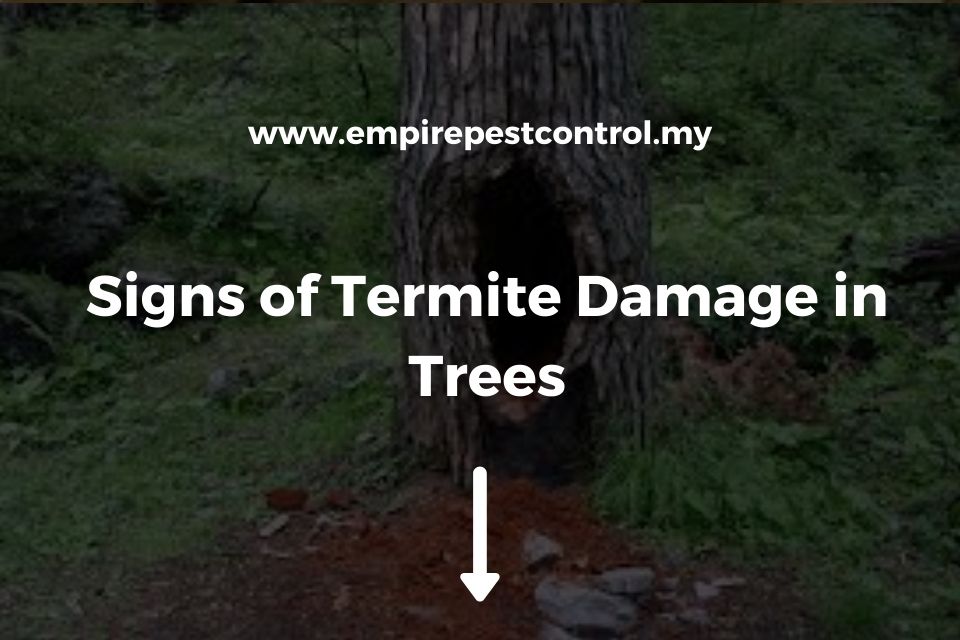Termites pose a threat to your trees by inflicting considerable harm. Recognizing the indicators of termite damage in trees is crucial so you can explore the types of termite treatments available and select the most suitable one for your needs.
There are many types of termites, but subterranean and drywood termites typically infest tree trunks; fortunately, these two species rarely spread into branches and leaves like other species of termite will.
The following list contains some common indicators that may suggest your tree has been attacked by these pests:
Contents
Termite Mud Tubes Around The Tree
One of the most common signs of termite damage in trees is a series of tubes that may seem like mud. These are actually tunnels that have been created by the insects to transport food and connect with other parts of their nests for protection purposes.
Termites use this type of tube system because they cannot chew through a wood; instead, they rely on digesting cellulose which can be found in the wood and other objects around their nests.
As these tunnels are created, mud is released onto the surface of the ground to make it easier for them to crawl up tree trunks or branches in order to get closer to food sources.
If you notice that your trees have this type of tube on their branches, it is most likely a result of termite infestation.
Holes In The Trunk Caused By Termites
If you see that there are any holes in the trunk of your tree, it is possible that termites have attacked this area.
Termites typically drill into trunks with their strong mandibles to get access to cellulose and other sources of nutrition deep within trees; they then use mud as a protective barrier so that predators cannot eat them while they are in their tunnel.
Termites also create holes in trees because they need to breathe oxygen; these holes are typically created by termites that cannot break through the trunk’s surface.
If you find any holes in the trunk of your tree, it is important that you contact a professional to get rid of the termites and stop them from damaging more trees or other structures around your property.
Leaves Aren’t Growing Due to Termites
If you notice that there are leaves lying on the ground and none of them seem to be growing in branches anymore, it is possible that they have died due to a termite infestation.
Termites typically destroy trees by attacking their roots; as such, this can lead to an issue where water cannot get into the tree so that it continues living.
When these leaves have holes or are discolored, it is a clear sign that they are not getting enough water.
If you notice any of these signs on your tree, contact a professional to get rid of the termites and save your beloved trees from being destroyed permanently.
Termites Near The Roots of The Tree
If you notice any termites near the roots of your tree, this means that they have found one of their favorite food sources: wood.
Since these insects need to gnaw through wood in order for them to eat it and digest cellulose, you must take care of them as soon as possible before they spread out further into your property.
When you suddenly notice worm-like creatures on the ground or near the roots of your trees, then it’s time to take action and get rid of the termites before they cause more damage.
Dive Deeper:
- Termite Damage: How Bad Can It Get?
- Termites And The Threat They Pose to Your Home’s Structure in Malaysia
- Benefits of Natural Termite Control
What to Do to Stop Termites?
The only way you can effectively stop termites is by hitting them right to their core. You need to eliminate them from their colony to ensure that they do not return.
If you notice any signs of termite activity in your yard, you must act fast to stop them before they cause more damage.
You can do so by calling in professional termite control to take care of the problem.
Conclusion
Termites in trees are a serious issue because they can cause significant damage to your property.
Learning how to spot them is the first step in preventing future termite infestations and costly repairs.
If you think you see any signs of termites, don’t hesitate to call our team for help today!

